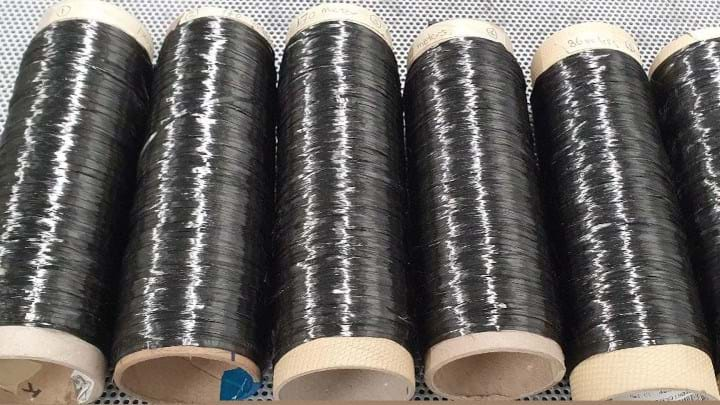UK partnership successfully recycles continuous carbon fibres

ENGINEERS at the UK’s National Composites Centre (NCC), along with partners, have successfully reclaimed continuous carbon fibres from a whole pressure vessel for reuse in a new vessel. NCC says this is a UK-first and represents a significant milestone in developing UK hydrogen capability.
NCC was created as the UK’s Centre of Excellence for composites research and development. It says that high-strength, lower-weight carbon fibres are the ideal choice for compressing and storing low density hydrogen gas, especially in hydrogen pressure vessels in vehicles such as aircrafts, where power-to-weight is critical. However, demand is expected to increase five-fold between 2025 and 2030 to 58,000 t/y, exceeding global manufacturing capacity.
Viable, low-cost recovery processes that maintain the strength of continuous carbon fibres are therefore key to developing a hydrogen economy. However, until recently, recycling processes for composite components such as aircraft wings and wind turbines have recovered short, mechanically-compromised fibres not suited for reuse in high-performance products.
NCC worked with B&M Longworth to achieve the successful recovery, using B&M Longworth’s patented DEECOM system, which removes waste polymers from filters and related production equipment. B&M Longworth is a component cleaning solution company.
In B&M Longworth’s system, superheated steam, under pressure, penetrates and condenses within microscopic fissures in composite polymers. On decompression, it boils and expands, cracking the polymer and carrying away broken particles. This pressure swing cycle is repeated until all the material suspended in the polymer is separated from the fibre, allowing monomers to also be reclaimed for possible reuse. The primary component material is left intact allowing any length to be retained.
NCC engineers worked with Cygnet Texkimp to create a new vessel using filament winding, which involves winding continuous fibre tows on a rotating mandrel. Cygnet provides fibre handling and converting technology.
The partners are looking collaborate with manufacturers to scale and industrialise the process. The next step in the work is to complete fibre characterisation analysis of reclaimed material and recycled vessel. The ultimate goal is to develop disruptive technologies to enable sustainable hydrogen storage.
Jen Hill, Director of B&M Longworth, said: “Our dream is for the UK composites industry to succeed, through collaboration and true partnership. By pulling together we can onshore advanced material production, optimise reuse, reduce import and supply chain issues and improve the UK’s export potential, all while leading on sustainability in composites.”
The fibre recovery and recycling project is part of NCC’s hydrogen programme, which aims to develop and share technical knowledge, cross-sector composite expertise, and state-of-the-art technology to help businesses achieve their hydrogen ambitions.
Recent Editions
Catch up on the latest news, views and jobs from The Chemical Engineer. Below are the four latest issues. View a wider selection of the archive from within the Magazine section of this site.




